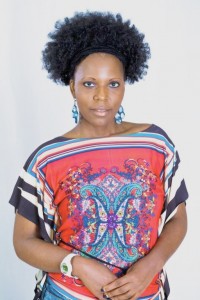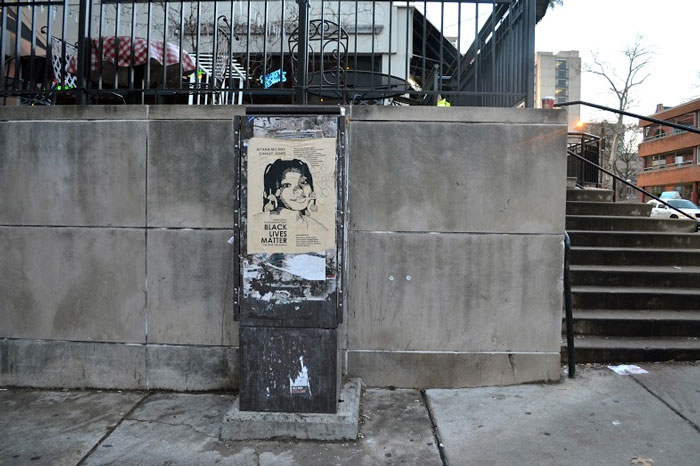I recently had the chance to talk to Dr. Toby Jenkins, Assistant Professor of Higher Education in the College of Education at the University of Hawaii. I had come across her work on cultural leadership and was very curious to learn more about the concept, as well as her work. She spoke passionately on the topic, raising issues of family, pride, service, community, and love. She definitely pushed my own thinking about the kind of leadership that our communities need.
Why don’t we start with the course you teach called Cultural Leadership; how did that come about?
It’s something that I’d been developing for a number of years. I worked at the cultural center at the University of Maryland and developed a leadership program focused on leadership in underrepresented communities. We were trying to figure out what we could learn from studying social movements and leaders of color. Probably at that point is when I started looking at combining the concepts of leadership and culture. Then, when I got to Penn State, I developed it into a formal course experience. It was a hodgepodge of different things. We were looking at the history of leadership in communities of color, so we looked at Che Guevara, the Black Panther Movement, the Civil Rights Movement, Cesar Chavez. We were looking at the ethics, the values, and the commitment to cultural community that were espoused in a lot of those movements. We were also looking at arts and music and poetry — things like the Black Arts Movement or the Harlem Renaissance — as forms of leadership and social education. We were looking at the advent of hip-hop and spoken word, and the different ways that leadership may not look like a boardroom, but it definitely does move communities and create action.
So the course became a full and robust examination of culture and leadership. One of the most transformative parts of the course for students has been the piece on family. We ask: how does what we’ve learned from our families — the values, the histories, the stories that are told in living rooms and on porches and stoops — influence the type of leaders we become? My father was a janitor. But as much education as I’ve had, as many organizations I’ve worked with and incredible people I’ve worked for, I know that the type of leader I am ties back to what I learned from my father. Because he taught me through his life that he was never too good to do anything. He was willing to humble himself, to pick up other people’s trash, to take care of his family. And I remember how he would say, “I know you’re going to grow up and get one of these big jobs, but always remember to speak to the janitors.” So I have the students write a cultural self-portrait, kind of a cultural story of your life, and those stories are absolutely incredible. The exercise of writing them allows students to develop a whole new appreciation for their family or their community experience. Whether they’re coming out of very difficult life experiences or privileged life experiences, they see value in all of it — that it’s teaching them lessons and it’s teaching them how to navigate life.
I also think place-based, experiential, community-based learning is really important. So in the class we spend time working with community organizations. We did an international exchange, taking them to Trinidad to look at how they incorporate culture into their community’s leadership; we’ve done weekends in Newark New Jersey to look at the idea of transformation at the city level, and needing to incorporate cultural sustainability. Those experiences definitely have been transformative for the students.
I’m curious about the concept itself. What does it mean to practice “cultural leadership”?
That’s what I’ve been trying to tease out. Cultural leadership is grounded in servitude and community. It ties back to Robert Greenleaf’s theory of servant leadership: the idea that you use your talents and resources and abilities and access to help other people. It’s not just about you making decisions, it’s about you figuring out what the community needs. Another critical piece of cultural leadership is creative leadership, and this can take a variety of different forms. It can be as simple as the stories mentors tell their mentees. Basic storytelling. Here in Hawaii they call it “talk story”: sharing histories and perspectives and experiences. Some cultural leaders may use visual art, some might use music, some might use dance. Some might use food: in past programs we looked at domestic leaders, most often mothers, and the value of domestic work, the creativity and ingenuity it takes to transform food that’s really disgusting and turn it into soul food, the value and importance of nourishing.
Cultural leaders have a strong sense of cultural efficacy. They see their culture as valuable. There’s a sense of pride, and a sense of real community love and rootedness. It’s about reaching back, the idea of Sankofa, and valuing the lessons of the past. Calling them forth, remembering them, bearing witness to them, and sharing them so they won’t be forgotten. A couple years ago I started looking at what a “love ethic” means in leadership. Are you committed to helping people to live love-filled lives, lives of peace, lives of joy, lives of abundance? Even when you challenge people, do you lovingly challenge people? You have to bring a spirit of love if you’re truly a cultural leader.
I’ve been studying cultural organizing, which is a related concept. Often, cultural organizers have very cultural goals: they are focused on helping their communities to see themselves in a different way, or they are challenging deficit narratives, or trying to change the way we think. Does cultural leadership focus on affecting how we see ourselves and shaping how our culture functions?
I honestly think cultural leadership can be for anything. Some people may choose as their life work to specifically create organizations like the ones that you are talking about, rooted in community, working with a particular population of people, and advancing cultural sustainability and transformation. But I also think we need cultural leaders in non-community spaces: in boardrooms, in classrooms, in hospitals, in all these spaces where people are significantly marginalized. If you had people with a more cultural ethic to their leadership, more of a sense of responsibility to their communities, then communities would be better served.
What are you working on these days?
Right now I’m working with an organization called PLACES, and they’re working with local schools to create place-based education, and to incorporate Hawaiian culture and ways of learning into the educational experience. They are bringing Hawaiian elders into the educational experience, not just as a speaker but to help build the curriculum. They are working with farmers to transform science curriculum. You’d be amazed at how much the island itself is used as a form of education. Art forms are being used to raise awareness and consciousness and build cultural efficacy among youth — spoken word is pretty big here, and music, a fusion of reggae and traditional Hawaiian music.
I still have former students in their thirties that get in touch with me, saying how much the course really shaped and motivated them to be conscious of what they did with their careers and the kind of impact they’re having, changing that dynamic of individual success. Because that was an ultimate goal for me: to re-imagine what success looks like, so that your success is bound to the success of the world, of your neighborhood, your community. You have to figure out what your contribution is going to be.





1 thought on “Cultural Leadership: An Interview with Dr. Toby Jenkins”
Comments are closed.